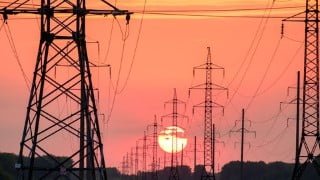Selection of Electrical Equipment’s for Hazardous Area
Learn about hazardous areas and the selection of electrical equipment for safe installation. Understand classifications, control measures, and explosion protection. Suitable for engineering students, electrical technicians, and process control professionals.
What you’ll learn
- • Hazard, Hazardous Area and Control measures • Criteria for Classifications of Hazardous areas
- • Classifications of Hazardous areas with Example • Typical Hazardous areas • Temperature Classes
- • Criteria for Selection of Electrical apparatus for Hazardous Area • Selection of Electrical apparatus According To Zones
- • Selection of Electrical apparatus According To The Ignition Temperature Of Gas Or Vapour • Selection of Electrical apparatus According To Apparatus Grouping
- • Safe Areas for Electrical installation • INGRESS PROTECTION (IP)
- • Understanding ATEX marking
Selection of Electrical Equipment’s for Hazardous Area
You will gain the following from this Course:
A good understanding of terminology used in Hazardous area
Understanding hazards of using electrical equipments in the presence of flammable gases, vapors & dust.
A basic knowledge of explosion protection.
Hazardous Area classifications.
Selection of electrical apparatus that can be used in a given Hazardous Area.
An understanding of Hazards & Control measures.
Course Overview:
Hazardous areas exist in every power plant. Following proper design rules and anticipating how the plant will be operated can avoid creating mixtures of gases that could explode or catch fire.
Hazardous area classification is a rigorous method of determining where an explosive environment may be present. The codes and standards used in this process provide guidance for selecting, building, and installing electrical equipment in that area. In general, hazardous areas (HAs) are defined by:
The type of hazard or hazardous material.
The likelihood of its presence in flammable concentration.
The auto-ignition temperature of the hazardous material.
Correct selection of electrical equipment for hazardous areas requires the many information’s such as:
Classification of the hazardous area ;
Temperature class or ignition temperature of the gas or vapor
Why is it necessary to identify electrical hazardous area in process plant ?
Hazardous areas are classified solely for the purpose of ensuring the safe and proper specification and installation of electrical/ electronic equipment located within them.
What you will Learn:
Hazard, Hazardous Area and Control measures
Understanding Fire Triangle
Criteria for Classifications of Hazardous areas
Classifications of Hazardous areas with Example
Typical Hazardous areas
Temperature Classes
Basic concepts of Explosion protection in Hazardous Area
Criteria for Selection of Electrical apparatus for Hazardous Area
Selection of Electrical apparatus According To Zones
Selection of Electrical apparatus According To The Ignition Temperature Of Gas Or Vapour
Selection of Electrical apparatus According To Apparatus Grouping
Safe Areas for Electrical installation
INGRESS PROTECTION (IP)
Who this course is for:
- Engineering Students
- Electrical Technicians & Engineers
- Process Control Technicians and Engineers or Process Automation Engineers
- Trade persons working in potentially Explosive Area.
User Reviews
Be the first to review “Selection of Electrical Equipment’s for Hazardous Area”
You must be logged in to post a review.







There are no reviews yet.